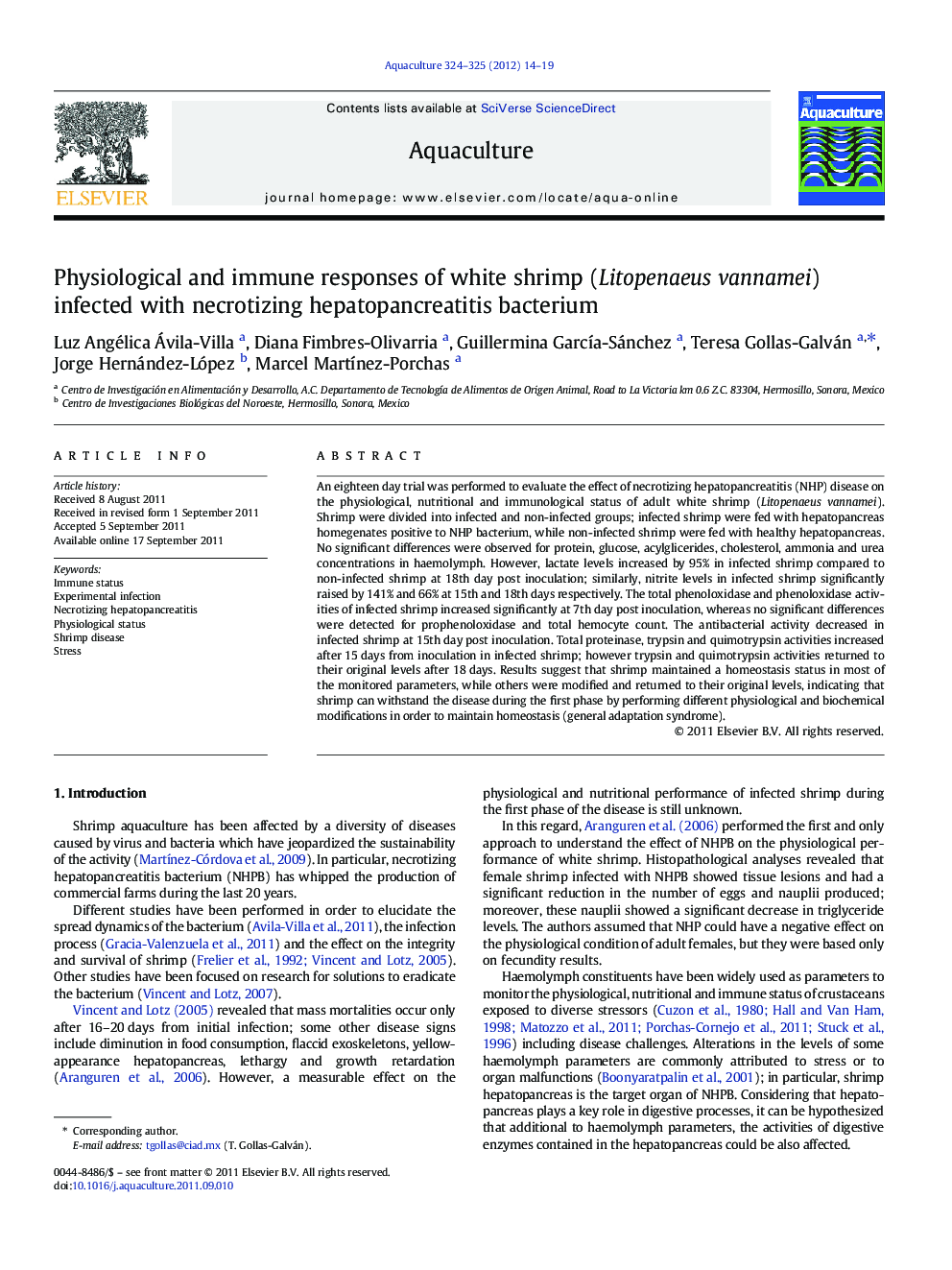| کد مقاله | کد نشریه | سال انتشار | مقاله انگلیسی | نسخه تمام متن |
|---|---|---|---|---|
| 2422752 | 1552897 | 2012 | 6 صفحه PDF | دانلود رایگان |

An eighteen day trial was performed to evaluate the effect of necrotizing hepatopancreatitis (NHP) disease on the physiological, nutritional and immunological status of adult white shrimp (Litopenaeus vannamei). Shrimp were divided into infected and non-infected groups; infected shrimp were fed with hepatopancreas homegenates positive to NHP bacterium, while non-infected shrimp were fed with healthy hepatopancreas. No significant differences were observed for protein, glucose, acylglicerides, cholesterol, ammonia and urea concentrations in haemolymph. However, lactate levels increased by 95% in infected shrimp compared to non-infected shrimp at 18th day post inoculation; similarly, nitrite levels in infected shrimp significantly raised by 141% and 66% at 15th and 18th days respectively. The total phenoloxidase and phenoloxidase activities of infected shrimp increased significantly at 7th day post inoculation, whereas no significant differences were detected for prophenoloxidase and total hemocyte count. The antibacterial activity decreased in infected shrimp at 15th day post inoculation. Total proteinase, trypsin and quimotrypsin activities increased after 15 days from inoculation in infected shrimp; however trypsin and quimotrypsin activities returned to their original levels after 18 days. Results suggest that shrimp maintained a homeostasis status in most of the monitored parameters, while others were modified and returned to their original levels, indicating that shrimp can withstand the disease during the first phase by performing different physiological and biochemical modifications in order to maintain homeostasis (general adaptation syndrome).
► We evaluated the effect of NHP on physiological and immunological status of shrimp.
► We monitored haemolymph constituents and digestive enzymes as indicators.
► The major part of indicators was unaffected or returned to their original level.
► Shrimp can withstand the first phase of the disease, maintaining a homeostasis status.
► Physiological responses explain the low mortalities during the first phase of NHP.
Journal: Aquaculture - Volumes 324–325, 12 January 2012, Pages 14–19